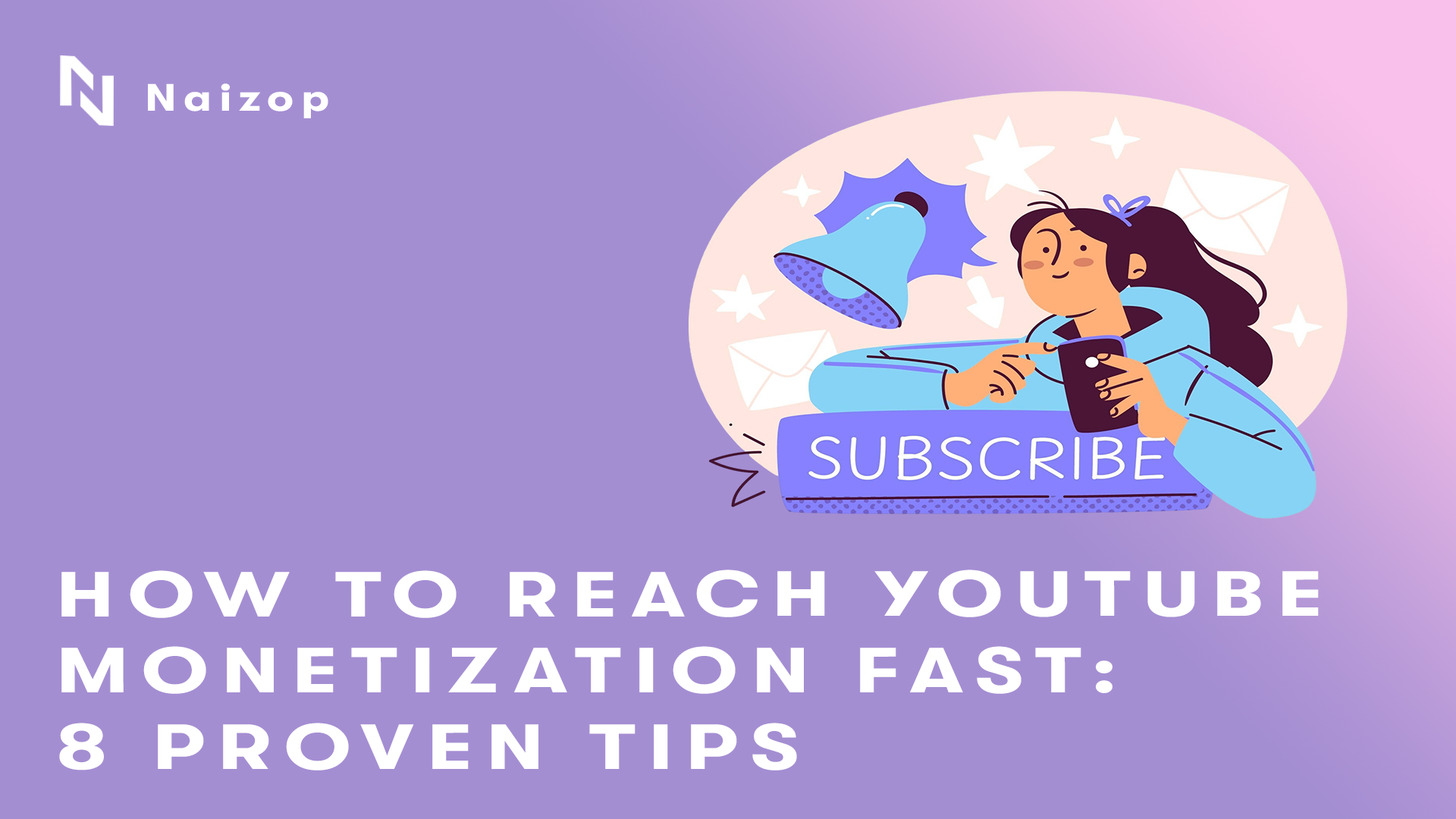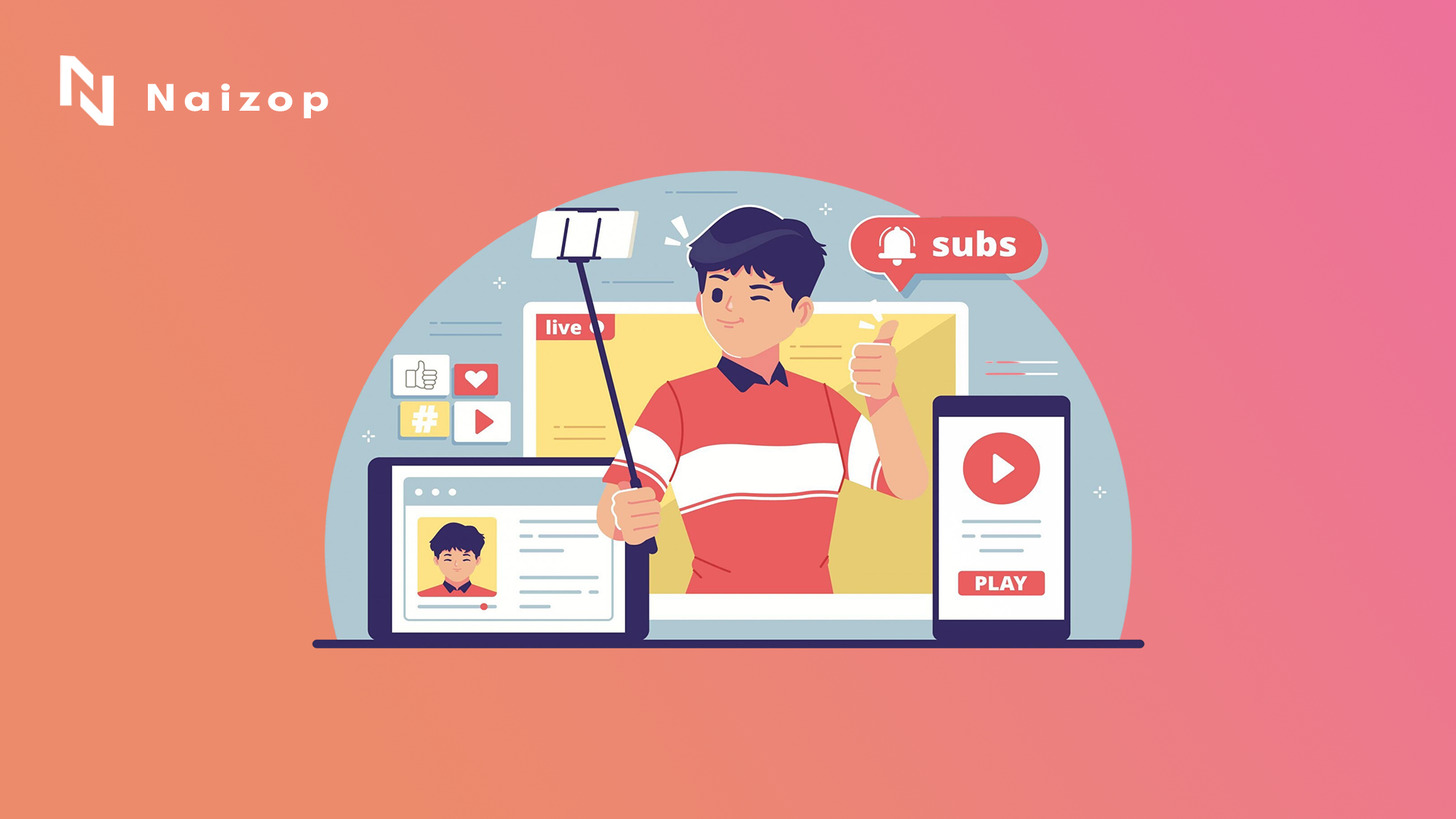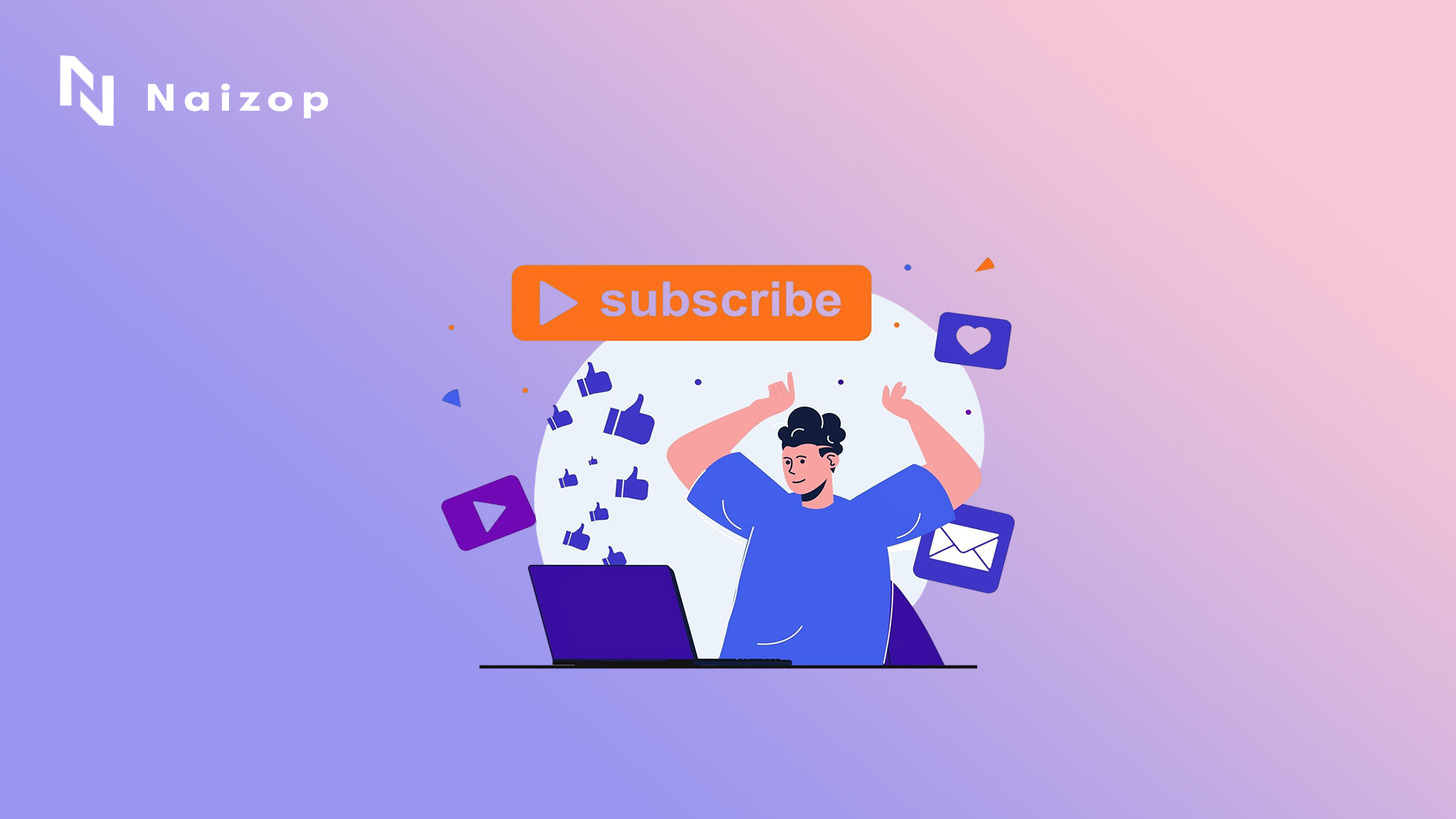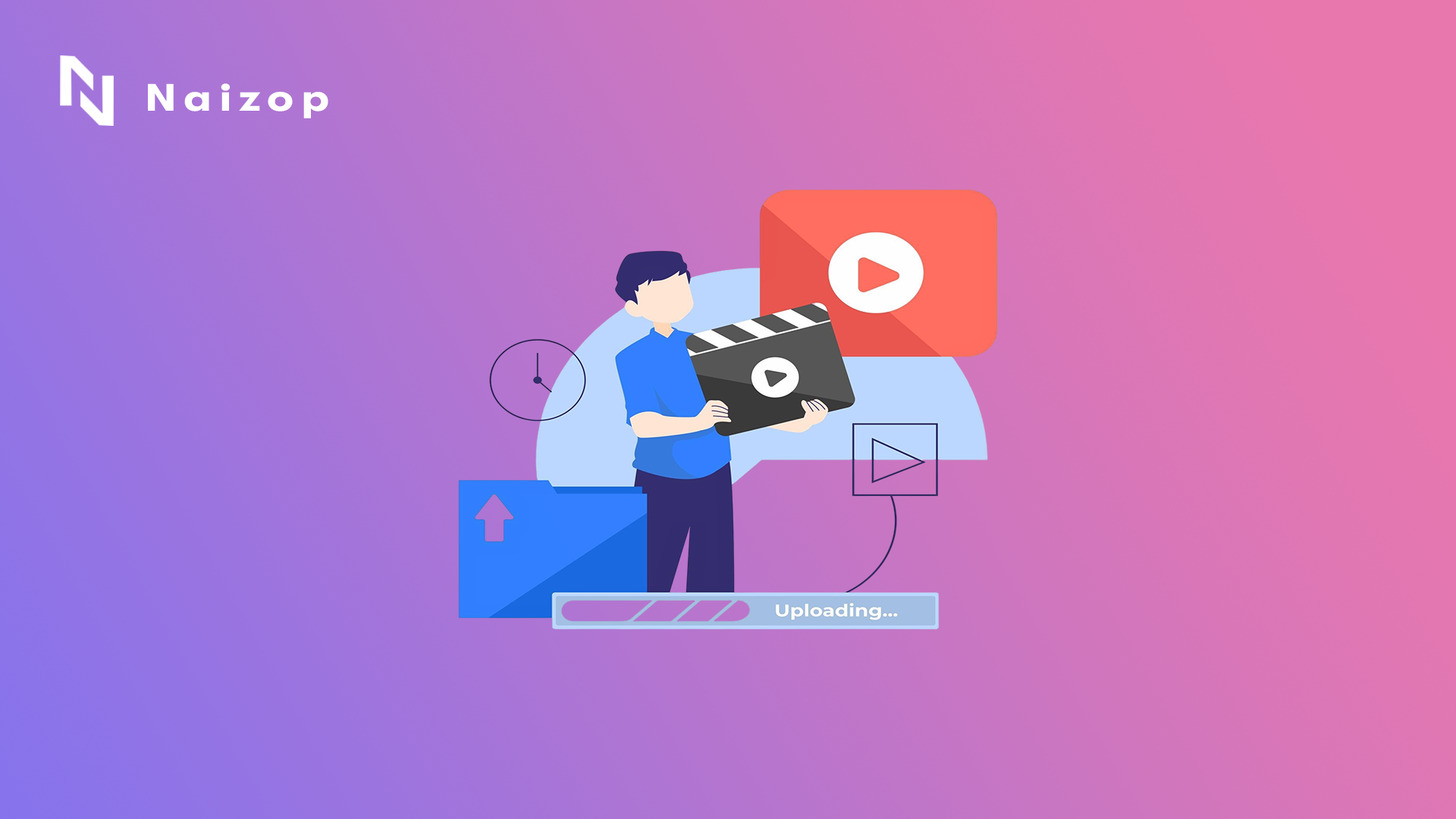Flash Sale |50% OFF on Followers, Likes, Views
Flash Sale | 50% OFF on
Followers, Likes, Views


Getting monetized on YouTube is a significant milestone for content creators looking to turn their passion into a profitable venture. As a creator, achieving monetization opens up various revenue streams, including ad revenue, channel memberships, and more. To be eligible for monetization, YouTube requires creators to have at least 1,000 subscribers and 4,000 public watch hours within the last year, or 1,000 subscribers and 10 million public Shorts views in the last 90 days.

Achieving YouTube monetization quickly is possible with the right strategy. For instance, some creators have managed to monetize their channels in as little as 60 to 90 days. While this requires consistent effort and strategic planning, services like Naizop can assist with acquiring high-quality YouTube Subscribers, helping to accelerate the process.
For more insights on YouTube monetization, you can read about my experience on Medium, where I share the strategies that worked for me and my clients.
Monetizing a YouTube channel requires more than just creating content; it demands a strategic approach to meeting YouTube's requirements. As the platform continues to evolve, understanding the current eligibility criteria for the YouTube Partner Program (YPP) is crucial for creators aiming to earn revenue from their content.
To be eligible to join the YouTube Partner Program, creators must meet specific requirements. These include accumulating at least 3,000 watch hours in the past 12 months, having a minimum of 500 subscribers, and uploading at least 3 public videos within the past 90 days. Additionally, creators must adhere to YouTube's community guidelines and terms of service, reside in a country where the YPP is available, and have a linked AdSense account to receive earnings.
The introduction of a two-tier monetization system in 2023 has provided creators with a clearer path to monetization. The first tier allows creators with 500 subscribers to access certain monetization features, such as Super Thanks, channel memberships, and other fan funding options.
The two-tier system is designed to provide creators with incremental opportunities to earn revenue as they grow their audience. At the first tier, with 500 subscribers, creators can access limited monetization features. However, to unlock full ad revenue, creators must reach the second tier by achieving 1,000 subscribers and accumulating 4,000 hour watch time goal within a 12-month period.
The following table outlines the requirements for each tier:
|
Tier |
Subscriber Requirement |
Watch Hour Requirement |
Monetization Features |
|
First Tier |
500 subscribers |
3,000 watch hours (or 3 million Shorts views) |
Super Thanks, channel memberships, fan funding |
|
Second Tier |
1,000 subscribers |
4,000 watch hours (or 10 million Shorts views) |
Full ad revenue, YouTube Premium revenue |
Understanding these requirements is the first step in creating a strategic plan to reach monetization quickly. By focusing on building their audience and watch hours, creators can unlock more significant revenue opportunities on the platform.

To maintain monetization eligibility, creators must continue to adhere to YouTube's policies, including community guidelines, terms of service, and copyright rules. Having a linked AdSense account and being located in a country where the YPP is available are also essential.
By meeting these requirements and understanding the two-tier monetization system, creators can develop a clear roadmap to achieving full monetization status on YouTube.
To succeed on YouTube, creators must focus on crafting content that resonates with their audience. This involves understanding what viewers want and delivering it consistently through content quality videos.
Identifying a profitable niche is crucial for monetization. It's about finding a balance between your passion and what your audience demands. A well-chosen niche can significantly impact your channel's growth and subscribers acquisition rate.
To find your niche, consider what you're passionate about and can discuss extensively. This enthusiasm will be evident in your content, making it more engaging for your viewers. Research your competition and identify gaps in the market that your channel can fill.

The debate between quality and quantity is ongoing among creators. While quality is paramount for engaging your audience, quantity is also crucial for maintaining a consistent presence on your YouTube channel. Most successful channels publish at least one video per month, with weekly uploads being the most typical.
To strike the right balance, focus on producing high-quality content that resonates with your viewers. At the same time, maintain a consistent schedule to keep your audience engaged and coming back for more. This balance will help increase your watch time and attract more subscribers.
Consistent growth on YouTube requires strategic content planning. This involves developing a content calendar, batch production, and theme development to ensure a steady stream of videos that appeal to your audience.
Develop a content calendar to plan and organize your videos in advance.
Use batch production to create multiple videos in one session, improving efficiency.
Implement theme development to create a cohesive content strategy that resonates with your audience.
By implementing these strategies, you can maintain a consistent presence on your YouTube channel, increase your watch time, and attract more subscribers, ultimately driving your monetization efforts forward.
Achieving YouTube monetization in a short timeframe demands a thorough understanding of the platform's policies and a well-planned content strategy. To reach YouTube monetization fast, creators must be willing to adapt and evolve their approach as needed.
One key aspect of achieving rapid monetization is setting realistic timeframes and creating actionable plans. By doing so, creators can focus their efforts on the most effective strategies.
To achieve youtube monetization quickly, it's essential to set realistic goals and create a roadmap for success. This involves understanding the monetization requirements and developing a content strategy that aligns with these goals.
For example, creating a 60-90 day plan with specific milestones can help creators stay on track. This might include targets for subscriber growth, watch hours, and content uploads.
YouTube Shorts offer a unique opportunity for creators to accumulate video views quickly. By leveraging this video format, creators can take advantage of the 3 million Shorts views alternative qualification path.
To maximize the benefit of Shorts, creators should focus on producing high-quality, engaging content that resonates with their audience. This can help convert viewers into subscribers and long-form content watchers.
Some creators may consider using external services to accelerate their growth on YouTube. Platforms like Naizop offer high-quality YouTube Subscribers and Watch Hours, which can be a helpful resource for creators looking to jumpstart their channel.
However, it's crucial to approach this option with caution and carefully research any service before using it. Creators should ensure that they comply with YouTube's terms of service and choose reputable providers.
By implementing these strategic approaches, creators can increase their chances of achieving monetization on YouTube quickly. For more information on how to get monetized on YouTube, check out this resource on getting monetized faster on YouTube.
In the competitive landscape of YouTube, ensuring your videos are optimized for maximum visibility is key to success. With an ever-growing number of creators vying for attention, understanding and implementing effective SEO strategies can be the difference between a thriving channel and one that's lost in the noise.
YouTube's algorithm is complex, taking into account numerous factors to rank and recommend content. At its core, YouTube SEO involves understanding these factors and optimizing your video accordingly. Key elements include the relevance of your content to the viewer's search query, watch time, engagement, and the overall performance of your channel.
A crucial aspect of YouTube SEO is keyword research. Identifying the right keywords that your target audience uses can significantly enhance your video's discoverability. Tools like Tube Buddy can assist in finding high-potential keywords with good search volume and manageable competition.
Your video thumbnail and title are the first points of contact with potential viewers. Crafting these elements to be attention-grabbing and relevant is crucial for improving click-through rates. Ensure your titles accurately reflect the content of your video while adhering to YouTube's community guidelines to avoid misleading your audience.
Thumbnails should be visually appealing and include text overlays or graphics that highlight the main topic or unique selling point of your content. This not only captures the viewer's attention but also provides a clear idea of what to expect from your video.
Effective keyword research involves identifying terms that are relevant to your content and have a viable search volume. Once you've identified your keywords, strategically implement them in your video's title, description, and tags. It's also beneficial to include keywords in your spoken content where it naturally fits.
Avoid keyword stuffing, as it can lead to penalties from YouTube. Instead, focus on creating a natural and informative title and description that includes your target keywords.
Using YouTube Analytics, you can identify optimization opportunities and refine your SEO strategy over time. This includes analyzing your video performance, understanding what works, and adjusting your approach accordingly.
Optimizing older content can also contribute to your monetization requirements by continuing to drive views and watch time. Regularly updating your older videos with new keywords, thumbnails, or descriptions can breathe new life into your existing content library.
A strong community is the backbone of a successful YouTube channel, fostering loyalty and driving watch hours. To achieve sustainable growth and increase your chances of monetization, it's crucial to engage with your audience and build a loyal following.
Engaging with your viewers by responding to comments is a fundamental step in building a loyal community. By replying to comments, asking for feedback, and letting your personality shine, you can turn casual watchers into dedicated subscribers. Effective comment management involves knowing when to respond, how to handle negative feedback, and ways to encourage more engagement. For instance, featuring fan content or hosting Q&A sessions can significantly boost interaction and make your viewers feel valued.
To foster a sense of connection and loyalty among your channel subscribers, consider implementing strategies such as:
Responding to comments in a timely and personalized manner
Asking for feedback to understand what type of content your viewers want to see
Featuring fan content to make your viewers feel appreciated
Hosting Q&A sessions to encourage engagement and interaction
Live streams are an excellent way to boost watch hours and increase engagement on your channel. By planning, promoting, and executing successful live events, you can significantly enhance your channel's visibility and attract new viewers. Consider structuring your live streams with interactive elements such as Q&A sessions, behind-the-scenes content, and polls to maximize watch time and engagement.
For more insights on building an online YouTube community, you can visit TubeBuddy's blog for additional strategies and tips.
Creating content that naturally encourages longer watch times is vital for improving your channel's performance. Techniques such as storytelling, proper pacing, and effective hooks throughout your videos can significantly enhance viewer engagement. By understanding what resonates with your active audience, you can tailor your content to meet their preferences, thereby increasing the overall watch hours on your channel.
To achieve this, consider the following strategies:
Use compelling storytelling techniques to captivate your viewers
Implement proper pacing to keep your content engaging throughout
Incorporate effective hooks to grab viewers' attention from the start
By focusing on these strategies and building a strong, engaged community around your channel, you can not only reach monetization faster but also create a more sustainable channel with higher revenue potential post-monetization.
By promoting your YouTube content across multiple platforms, you can significantly boost your channel's visibility and attract new subscribers. This strategic approach not only enhances your reach but also contributes to faster monetization.
To effectively drive traffic to your YouTube channel, it's crucial to leverage various social media platforms such as Instagram, TikTok, Twitter, and Facebook. Each platform requires platform-specific tactics to maximize outreach. For instance, using Instagram Stories and Reels can help you engage with your audience more interactively.
When promoting your YouTube channel on social media, consistency is key. Regularly posting content that directs followers to your YouTube channel can significantly increase your viewership. Moreover, utilizing the unique features of each platform, such as Twitter polls or Facebook Live, can further enhance engagement.
Collaborating with other creators in your niche is a powerful way to expand your audience. By featuring each other in your videos, you can tap into each other's subscriber base, leading to mutual real growth. To initiate a collaboration, identify creators with a similar target audience and propose a mutually beneficial project.
When collaborating, it's essential to structure your content in a way that appeals to both your audiences. This could involve creating a video that addresses a common interest or theme, thereby increasing its appeal to a broader audience.
Repurposing your YouTube content for other platforms is an efficient way to maximize your reach without duplicating effort. This can involve creating platform-specific edits or teasers that direct viewers to your YouTube channel. For example, turning a YouTube video into a series of Instagram posts or a TikTok video can help you reach different segments of your audience.
To maintain a consistent brand identity across platforms, ensure that your messaging and visual elements are aligned. This consistency helps in building a strong brand that viewers can recognize and trust, regardless of the platform they're on.
By implementing these cross-platform promotion strategies, you can not only accelerate your YouTube channel's real growth but also work towards achieving the monetization requirements more efficiently.
After fulfilling YouTube's requirements, you're ready to take the next step: applying to the YouTube Partner Program. This process involves several crucial steps that ensure your channel meets YouTube's guidelines and is ready for monetization.
Before applying to the YouTube Partner Program, it's essential to prepare your channel for review. This involves conducting a thorough content audit to ensure all videos comply with YouTube's community guidelines and terms of service. Review your content for any potential copyright claims or violations that could jeopardize your application.
Ensure that your channel's content is consistent with YouTube's policies, and remove or modify any content that doesn't comply. This step is crucial in avoiding application rejection due to guideline violations.
To apply for the YouTube Partner Program, navigate to the YouTube Studio's "earn" page. This page not only allows you to apply but also tracks your watch time and subscriber count. When YouTube gives you the green light, simply click on the "Apply" button to start the application process.
The application process involves several steps, including linking your AdSense account, verifying your identity, and providing tax information. Ensure that all information is accurate and up-to-date to avoid any delays or issues with your application.
Link your AdSense account to receive payments.
Verify your identity as required by YouTube.
Provide accurate tax information to comply with tax regulations.
If your application is rejected, don't be discouraged. You have 21 days to appeal the decision. If rejected a second time, you still have 21 days to appeal, but you'll need to wait 90 days before re-applying.
Use the time between applications to address any issues that may have led to the rejection. This could involve removing copyrighted content, adjusting your content strategy to better align with YouTube's guidelines, or resolving any other violations.
By understanding the application process and being prepared, you can successfully join the YouTube Partner Program and start monetizing your YouTube channel. Patience and persistence are key during this final step of your monetization journey.
Beyond AdSense, creators can tap into various other revenue streams to boost their income on YouTube. While ad revenue is a significant source of income, diversifying your monetization strategies can lead to greater financial stability and growth.
Channel memberships offer a customizable way to earn money on YouTube by providing exclusive perks to loyal viewers. These perks can include loyalty badges, custom emojis, and private live streams, generating a steady income from your most dedicated fans. Prices for memberships can range from $0.99 to $100 per month, allowing creators to tailor their offerings to their audience's preferences.
Super Chats and Super Thanks are other features that enable creators to earn revenue during live streams and on regular videos. By encouraging viewers to participate in these features, creators can significantly boost their earnings. Effective use of these tools requires engaging with the audience and promoting their use during live streams.
Affiliate marketing is another lucrative revenue stream for YouTube creators. By collaborating with brands that align with their channel's niche, creators can promote relevant products or services and earn a commission for each sale made through their unique referral link. It's essential to disclose affiliate links clearly to maintain audience trust and comply with YouTube's policies.
Sponsorships and product placements offer additional opportunities for creators to make money. By partnering with brands, creators can produce sponsored content that resonates with their audience. The key is to select brands that align with the channel's niche and values, ensuring that the sponsored content feels organic and engaging.
Selling merchandise is a popular way for creators to earn revenue and promote their brand. YouTube's merch shelf allows creators to showcase their products directly on their channel, making it easier for viewers to purchase merchandise. Creators can also use external platforms to sell a wider range of relevant products.
Digital products, such as courses, ebooks, and templates, offer another revenue stream. By leveraging their expertise, creators can develop high-quality digital products that provide value to their audience. Promoting these products through YouTube videos and other social media channels can help drive sales and increase revenue.
Diversifying revenue streams is crucial for long-term sustainability on YouTube. By combining channel memberships, Super Chats, affiliate marketing, sponsorships, merchandise, and digital products, creators can build a robust monetization strategy that maximizes their earnings potential.
YouTube monetization is no longer a distant dream; it's a realistic goal for creators who apply the right techniques. To achieve this, focus on creating high-quality content that resonates with your audience and fosters engagement.
To get monetized on YouTube, you need to meet specific requirements, including having 1,000 subscribers and 4,000 watch hours in the past 12 months. While this may seem daunting, it's achievable with a well-planned strategy. For instance, leveraging strategic approaches to reach YouTube monetization thresholds in 90 can significantly accelerate your path to monetization.
Building a sustainable YouTube channel involves more than just hitting monetization thresholds. It requires consistent content creation, strategic optimization, and active community building. By focusing on these areas, you can not only achieve monetization but also ensure long-term success on the platform.
To accelerate your growth, consider cross-platform promotion and collaborating with other creators. These strategies can help expand your audience and increase your watch hours. Moreover, staying informed about YouTube's community guidelines and adapting to platform changes is crucial for ongoing success.
In conclusion, achieving YouTube monetization and building a successful channel requires dedication, persistence, and a willingness to adapt. By following the strategies outlined in this article and staying committed to your goals, you can earn revenue from your YouTube channel and enjoy the rewards of your hard work.
To be eligible for the YouTube Partner Program, creators must have at least 1,000 subscribers and 4,000 watch hours in the past 12 months, comply with YouTube's community guidelines, and have an AdSense account.
The time it takes to get monetized on YouTube varies, but with a well-planned strategy, creators can accelerate their growth and meet the 1,000 subscriber and 4,000 watch hour requirements within 60-90 days.
Watch time is crucial for YouTube monetization, as it directly impacts a channel's ability to earn revenue through ads. Creators should focus on producing high-quality, engaging content that encourages longer watch times and increases overall watch hours.
YouTube has a two-tier monetization system, allowing creators with 500 subscribers to access some monetization features, such as channel memberships and Super Chats. However, to access full monetization features, including AdSense, creators must meet the 1,000 subscriber threshold.
To increase visibility, creators can leverage YouTube SEO fundamentals, craft clickable thumbnails and titles, and conduct strategic keyword research. Additionally, promoting original content on social media and collaborating with other creators can drive traffic to a channel.
Creators can explore alternative revenue streams, such as channel memberships, Super Chats, affiliate marketing, sponsorships, merchandise, and digital products, to diversify their income and reduce dependence on AdSense.
If an application is rejected, creators can review the feedback provided by YouTube, address any issues, and resubmit their application. It's essential to ensure that the channel complies with YouTube's community guidelines and terms of service.
Understand the current YouTube monetization requirements.
Learn how to create content that resonates with your audience.
Discover strategies to boost your YouTube Subscribers and Watch Hours.
Explore the benefits of using services like Naizop for growth.
Find out how to diversify your revenue streams once monetized.
In this article